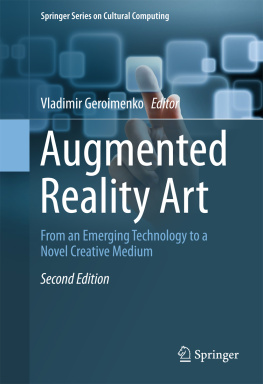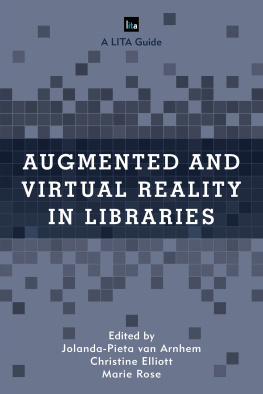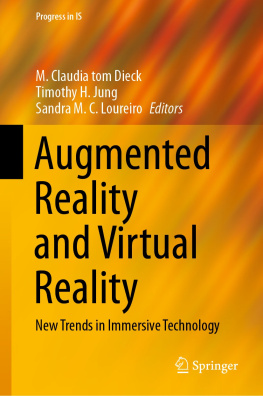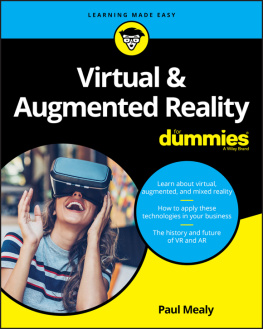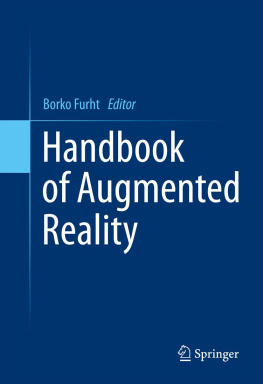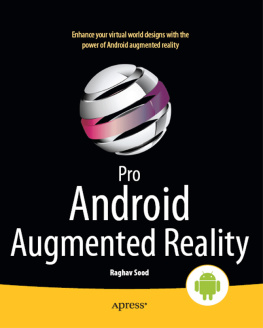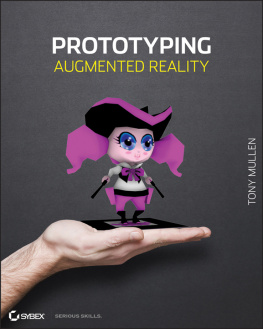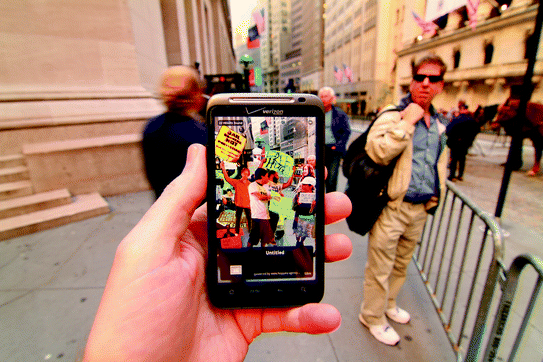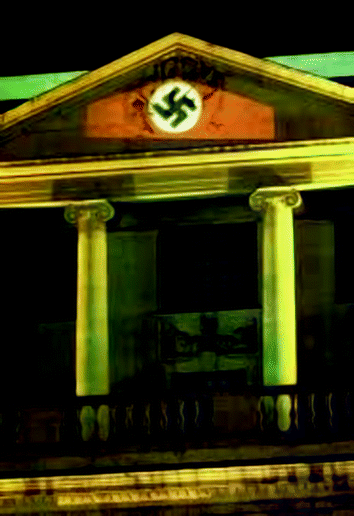1.1 Introduction
Arguably two of the most important activist events in recent US history were that of the Occupy Wall Street Movement and the whistle-blowing by Edward Snowden (see Fig. ). The two events highlight differences between physical and virtual approaches to activism and their end results.
Fig. 1.1
Mark Skwarek, ProtestAR , AR Zuccotti Park occupiers in front of NYSE (2011)
(Images reproduced courtesy of the artist)
Many, including some of the mainstream media, argue that the physical presence of protesters in the streets of the Occupy Movement accomplished very little if nothing at all. Yet Occupy created a movement which organized and inspired a new generation of activists, sweeping across the globe. In contrast, Snowdens leaked information shook American society to the core. Although both actions utilized technology, Occupy was largely an effort that took place by taking over the real world with people on the ground. Snowdens action was accomplished largely through the use of technology and courage. The implications of his actions have changed the way we think about communication and the political elite. Does the impact of technology give activists the upper hand in the effort to create change in society or does it remove people in the street from the equation? An emerging technology called augmented reality has the ability to combine both the physical experience of the streets and digital experience of the Internet. AR has the power to take net-based activism such as blogging or even hacktivism (hacktivism is activism with hacked electronic equipment. See http://en.wikipedia.org/wiki/Hacktivism ) and turn it into a real-world experience. AR allows activists to place their messages at specific locations anyplace on the face of the earth and share those messages with others either physically at the site or online.
The effects of both Occupy and Snowden were felt across the globe. While both actions had tied to technology, Occupy was largely about the people taking over public space and voicing their problems with the failure of the system during an economic meltdown. Snowdens information leak was done with the aid of technology, by infiltrating the NSAs system and removing computer files that exposed their misdeeds.
In the wake of the initial Occupy Wall Street Movement, the question of the activists role in modern-day society comes into question. What Occupy accomplished raises many heated debates. What is not in question is that the movement swept across the nation and then the world with the help of the Internet and social media.
Technology in the hands of the masses has had a profound impact on the history and reach of activism. The public now has access to technology which to most people was unimaginable only a few years ago. Now relatively inexpensive, incredibly powerful, networked mobile technology is beginning to find its way into the hands of people around the world. The new technologies grant the public abilities which would once be considered superhuman, but also create a tool that can be exploited, manipulated, and used to spy upon the public.
Some activists have begun working with AR to see its potential as a tool for social change. The works covered in this chapter explore what makes AR unique as a medium and which of its qualities can be best utilized to further activist causes. This text will document the first activist explorations with AR, what has been done, and compare it to activist approaches from the past and future.
1.2 Past Activists and Their Technology
Activism has a long and accomplished history of creating change on a global scale long before the incorporation of electronic technology. Societies have always organized against repression by any means available. They have been organizing and participating in mass protests against the political and corporate elite since the beginning of recorded history. One of the first recorded mass protests took place in ancient Egypt when workers constructing a royal necropolis did not receive payment. They performed a sit in inside the mortuary temples and refused to leave until they received it (Andrews ).
Recently, Egyptians again rose up in protest and occupied the Tahrir Square. This time they were aided by technologies like cell phones and social media. With or without technology, humans will adapt to the situation and use whatever is available to create social change when faced with injustice. Long ago fires and bells were used to signal approaching danger. Paul Revere used lanterns to warn of the approaching British forces. Technology will never be a fix-all solution to fight injustice, but it can aid activists to help level the playing field against the corrupt elite.
Another example: In 1888, Jacob Riis began documenting the horrific living conditions of the lower classes in the New York City slums (see Fig. ).
Fig. 1.2
Jacob Riis, Five Cents a Spot (1974)
(Images reproduced courtesy of the Museum of Modern Art)
More recently art activist Krzysztof Wodiczko began pioneering guerilla projection; he utilized very powerful machines capable of projecting images onto entire building facades (see Fig. ).
Fig. 1.3
Krzysztof Wodiczko, Projection on South Africa House , Trafalgar Square, London (1985)
(Images reproduced under creative commons)
1.3 Augmented Reality Activism
Activist approaches of the past may have become less effective or may not have worked as effectively against the new tactics of the political and financial elite. The techniques used by the ancient Egyptian royal necropolis workers to organize may not have been as effective if duplicated for a twentieth century occupation.
The Critical Art Ensemble (CAE) argues: At one point in time the control of the street was a valued item. In nineteenth century Paris the streets were the conduits for the mobility of power, whether it was the economic or military in nature. If the streets were blocked, and key political fortresses were occupied, the state became inert, and in some cases collapsed under its own weight. This method of resistance was still useful up through the 1960s, but since the end of the nineteenth century it has yielded diminishing returns, and has drifted from being a radical practice to a liberal one (Critical Art Ensemble ).
Some see the Occupy Movement as fitting CAEs classification having achieved very little in the form of political change. Yet the movement spread over 951 cities across 82 countries inspiring a global community of activists (Bell ). The power of the digital network and the effect it can have is unquestionable such as the cyber attacks which shut down the Estonian Internet in 2007. Yet human beings are social creatures who will naturally form communal groups when oppressed by those in wielding power. AR is the medium that has the power to bring CAEs electronic civil disobedience and the actions in the street together.

